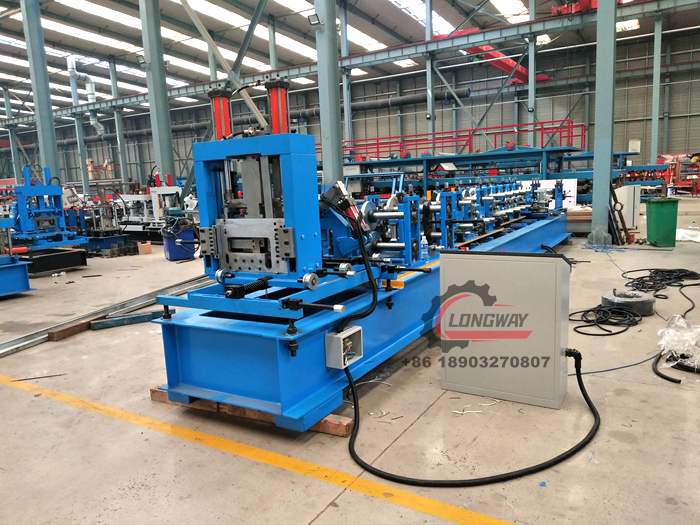ridge cap tile roll forming machine
Ridge Cap Tile Roll Forming Machine An Overview
The construction and roofing industry has seen significant advancements in technology, particularly concerning the manufacturing of roofing materials. One such advancement is the use of a Ridge Cap Tile Roll Forming Machine. This innovative machinery plays a crucial role in producing ridge cap tiles, which are essential components in roofing systems. These tiles not only provide aesthetic value but also enhance the durability and longevity of roofs.
What is a Ridge Cap Tile?
A ridge cap tile serves as the finishing piece that sits at the peak or ridge of a roof. It is designed to cover the joints where two roof slopes meet, effectively sealing the roof from water, debris, and other elements. These tiles come in various materials, including clay, concrete, and metal, but regardless of the composition, they serve a dual purpose enhancing the visual appeal of a roof and ensuring its structural integrity.
The Functionality of Ridge Cap Tile Roll Forming Machines
The Ridge Cap Tile Roll Forming Machine is designed to automate and streamline the production of ridge cap tiles. The machine typically consists of several key components, including a decoiler, a roll forming system, a cutting unit, and a control system.
1. Decoiler The process begins with the decoiler, which unwinds the metal coil that serves as the raw material. This coil is fed into the roll forming system.
2. Roll Forming System As the metal coil moves through the roll forming system, it passes through a series of rollers that progressively shape it into the desired profile of a ridge cap tile. The precise alignment and tension of the rollers are critical to ensuring consistent product quality.
3. Cutting Unit Once the metal has been formed into the appropriate profile, it is cut to specific lengths by an automated cutting unit. This ensures that each ridge cap tile is uniform and meets the required specifications.
4. Control System The entire operation is monitored and controlled by a central system, often equipped with digital displays, touch screens, and software that allows for fine-tuning of the production parameters. This ensures efficiency and minimizes downtime during production.
ridge cap tile roll forming machine

Advantages of Use
The adoption of the Ridge Cap Tile Roll Forming Machine brings numerous advantages to manufacturers
- Efficiency The automated process significantly reduces the time and labor required to produce ridge cap tiles. This increased efficiency can lead to cost savings and higher output.
- Quality Control With high precision in the roll forming process, manufacturers are assured of consistent quality in their products, reducing waste and the likelihood of defects.
- Customization Many modern machines allow for quick changes in design and specifications, enabling manufacturers to meet diverse customer needs without extensive reconfiguration.
- Cost-Effectiveness Although the initial investment in a roll forming machine may be substantial, the long-term savings in labor and material costs can outweigh this upfront expenditure.
- Durability Machines can produce ridge cap tiles from robust materials that are resistant to weathering and damage, ensuring that roofs have a long-lasting finish.
Conclusion
In conclusion, the Ridge Cap Tile Roll Forming Machine represents a significant leap forward in roofing material production. Its automated approach not only enhances efficiency and cost-effectiveness but also contributes to improved quality control and customization options. As the construction industry continues to evolve, embracing such technologies will be essential for manufacturers aiming to meet the growing demand for high-quality, durable roofing solutions. The investment in a Ridge Cap Tile Roll Forming Machine can not only streamline production but also elevate a manufacturer’s standing in a competitive market, ultimately helping to create roofs that are not only functional but also visually appealing.
-
Roof Panel Machines: Buying Guide, Types, and PricingNewsJul.04, 2025
-
Purlin Machines: Types, Features, and Pricing GuideNewsJul.04, 2025
-
Metal Embossing Machines: Types, Applications, and Buying GuideNewsJul.04, 2025
-
Gutter Machines: Features, Types, and Cost BreakdownNewsJul.04, 2025
-
Cut to Length Line: Overview, Equipment, and Buying GuideNewsJul.04, 2025
-
Auto Stacker: Features, Applications, and Cost BreakdownNewsJul.04, 2025
-
Top Drywall Profile Machine Models for SaleNewsJun.05, 2025








